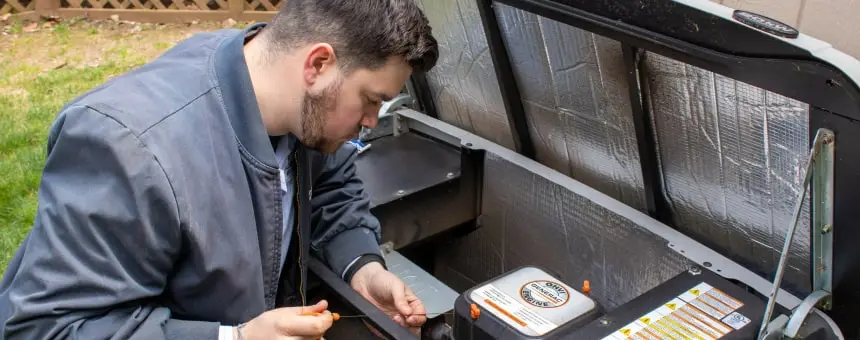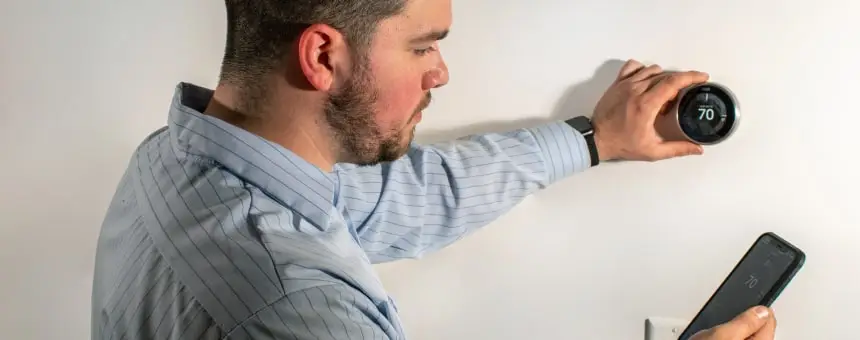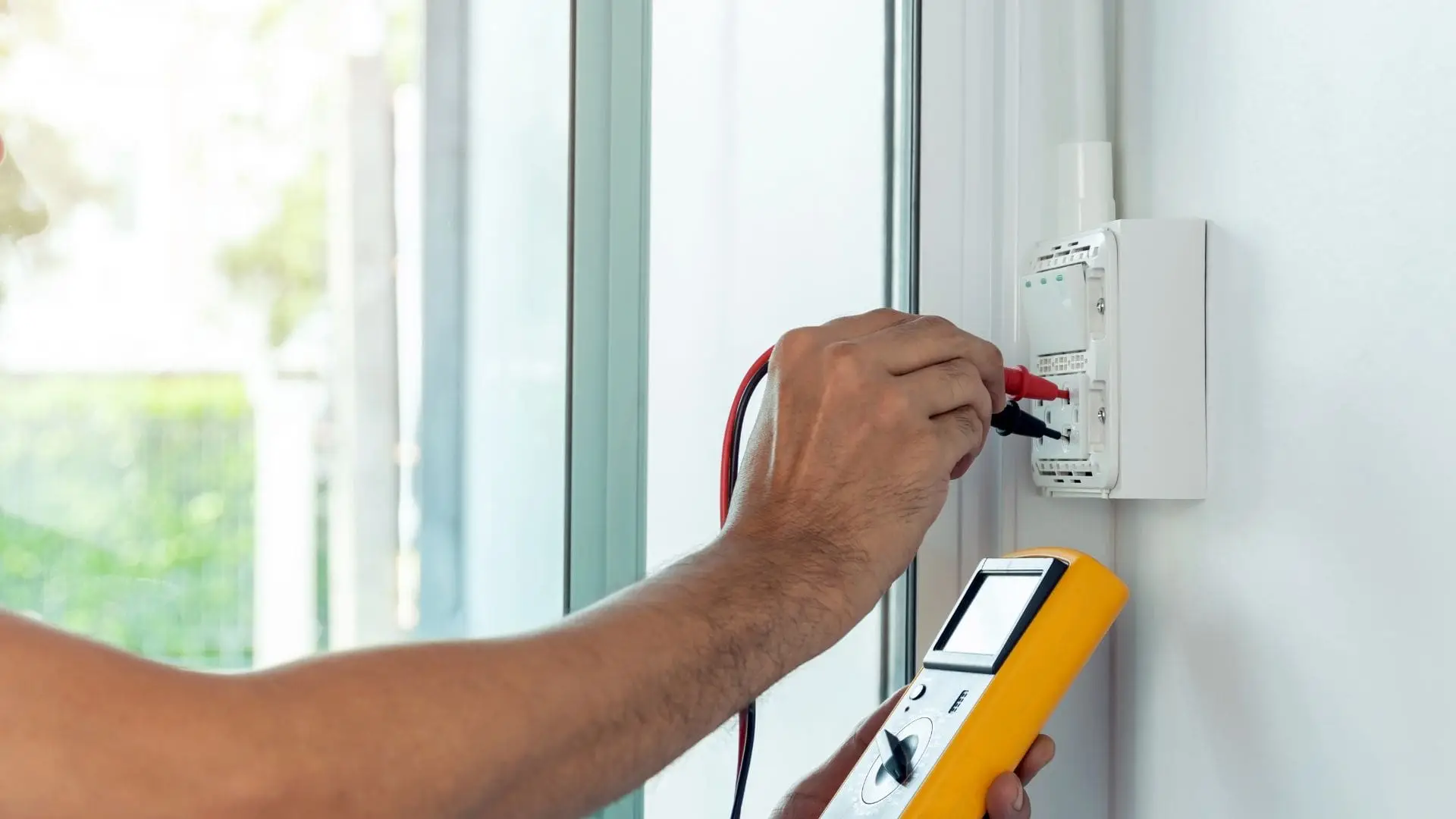What To Know Before Buying a Generator
Introduction:
An automatic standby generator is a major appliance purchase, so we at Bruni & Campisi Inc. prepared this to help provide answers to common questions about them. If additional clarification or information is needed, we invite you to contact our office at 914-350-4656 where we will do our best to provide whatever information is available.
General:
Due to several recent severe storm-related power outages, and the predictions by many that these storms will increase both in frequency and severity, more and more Northeast residents are turning to generators to provide emergency power for their homes and offices. An automatic standby generator can provide electric power for your home or office automatically in the event of a power outage. If the power fails, the generator will sense the power failure and turn itself “on” and provide
electric power for you. Once it senses that the utility has restored your electricity, it automatically shuts itself down and returns to “standby” mode. It will repeat this process every time the power fails.
The generator must be connected to your electrical system in order to provide you with power. In addition, it must be connected to your gas (natural or propane) system in order to operate. The “heart” of the generator is its motor – which is similar to a large gasoline lawnmower motor. Periodically, it must be checked and serviced.
Generator Sizes & Capacities:
Automatic Standby Generators are available in different sizes (capacities). Depending on the power capacity, measured in kilowatts (KW), a generator will provide power for either some or all of the circuits and appliances in your home or office. Based on the appliances and amount of electricity required for your building, we can provide different sized generators to perform in one of the following ways:
Run only the critical electric circuits in your home. (i.e. refrigerator, sump pump, heating system, security system, telephone system, well pump, ejector pump, etc) Run all of the circuits and appliance in your home, however it may not be capable of running them all simultaneously. Run all of the circuits and appliances in your home at the same time.
Naturally, the greater the capacity, the more expensive the generator becomes.
Connecting the Generator to Your Electric System:
This must be performed by a licensed electrician. We can provide this through our licensed electrical subcontractor. If you prefer, we can also work with your licensed electrician.
A transfer switch will be required to pair the generator with your homes electric system. This device enables the automatic standby generator to sense the electricity in your home. When the utility electricity fails, it automatically switches you to generator power. Conversely, it senses when the utility power has been restored and switches you back from generator power to utility power.
Based on the type of transfer switch used, we can connect the new generator to your electric system in different ways. Each has its advantages and disadvantages outlined below:
1) We can connect the generator using a “standard” transfer switch that will power only specific, critical electric circuits in your home. Then, during a power outage, only those circuits and no others will be powered. Advantage: the transfer switch is less expensive and by limiting the number of circuits, a smaller generator can be used to save on the cost of the generator itself. Disadvantage: no other circuits are ever powered and the utility savings (between this and a larger generator and transfer switch with additional circuit capability) may be small.
2) We can connect the generator using a “smart” transfer switch that will power every existing circuit in your home or office. During a power outage, all circuits will be powered. However if too many circuits are actually used simultaneously, the smart transfer switch will prioritize the circuits and will temporarily limit the circuit(s) that are “overloading” the generator until another circuit is no longer being used. In this way, you can provide power to your entire home or office with a smaller generator. Advantages: every circuit is capable of being used and a smaller generator can be installed saving on installation cost. Disadvantage: every circuit may not be available for use simultaneously.
3) We can connect a larger generator with the capacity to provide enough power for every circuit in your home or office, even if used simultaneously. Advantage: every circuit and appliance in your home or office can be used simultaneously. Disadvantage: a larger generator is required resulting in a greater cost of installation.
Connecting the Generator to Your Natural (or Propane) Gas System:
The generator requires either natural gas or propane to operate. A licensed plumber (that’s us!) is required to connect the generator to your gas system.
Natural Gas:
A generator that utilizes natural gas can run without the need for manually refueling since the gas is supplied by your utility company in the same manner it’s supplied to your home heating system or appliances. The necessary gas piping typically must be installed from the existing gas meter area at your home or office to the new generator and must be sized correctly to be able to supply the proper amount of gas. In addition, since each gas meter has a capacity rating, we must determine the exact amount of gas your appliances currently require, add to it the amount of gas the new generator will use, and determine if the existing gas meter has the ability to meet the new demand. Typically, it does not, and the gas meter will then need to be upgraded to a larger size meter that will be capable of supplying the greater amount of gas needed. Bruni & Campisi will provide the modified piping for the new larger gas meter as well.
Low Pressure Natural Gas:
A special word about natural gas – not all natural gas that’s supplied is alike. What we mean is although it’s the same “gas” everywhere, it’s not always supplied at the same pressure. Most municipalities and neighborhoods have gas that’s supplied under substantial pressure, and that’s what the new generator will require to start and operate properly. However some neighborhoods still have older gas piping under the streets and in those neighborhoods, the utility company supplies the gas under a lower pressure. In those areas, we must test the exact pressure being supplied to your home (we’ll do this at no charge.) If that test indicates that the gas pressure to your home is lower than the requirements of the generator, we will not install a natural gas generator for your home (and we must consider other options). If the test indicates sufficient pressure, we can offer you a natural gas generator however we must advise that, in low pressure areas, the utility does not guarantee that they’ll maintain a gas pressure that will be sufficient to run the generator. It’s possible the gas pressure could drop due to heavy use by other customers in the neighborhood. In such a situation, if the gas were to drop below the requirements of the generator, it may falter or not operate. On the other hand, during an electrical outage, there will undoubtedly be fewer gas customers using gas because many won’t have electric power! In any case, you can decide the course of action after receiving the gas pressure test results.
Propane:
If natural gas is not available at your home or office, we can consider installing a propane-fired automatic standby generator. If you currently utilize propane for home or pool heating, we can usually connect to the existing propane storage tank(s) although you may need to increase your storage tank capacity in order to provide enough propane. A generator that utilizes propane can run for days but is dependent on how much propane you have in your tanks. The necessary propane piping must typically be installed from your propane storage tank(s) to the new generator.
If you don’t currently use propane, we can consider installing the necessary propane storage tank(s) and piping enabling the installation of a propane-fired generator. We have the ability to provide the necessary propane storage tank(s), piping, etc. for the new generator via our propane subcontractor. They can provide the tank and piping as well as propane deliveries both now and in the future, as needed. Of course, all such work must first be approved by your municipality. We will assist you in submitting the required permit application for this work.
The Utility Company:
The utility company requires that any customer installing a new gas appliance submit an application indicating the amount of gas that will be needed for both the current gas appliances in your home or office and for the proposed new appliance (the generator.) They will then determine if the piping (under the street) can support the additional “gas load” and advise us to which gas meter will be required. We will prepare and submit that application for you. They will subsequently provide a piping specification for a new gas meter, if required. We must follow their specification when installing our piping. Although, as licensed plumbers we must perform that piping, the Utility Company will supply and install the new gas meter after we’ve completed our work – sometimes much later. Their timing is beyond our control. Also, they may charge you directly (not included in our proposal) for their supply of the new gas meter. In addition, they will typically require that the existing gas piping within your home or office be tested in their presence to verify that it is still leak free. We will supply that test and we typically include that test in our generator proposal. (We assume that your existing gas piping is leak free and will pass the test. As such we do not include any repairs to existing gas piping at your home nor any additional tests on the existing piping, if it becomes necessary.)
Municipal Requirements:
Almost all municipalities will require a plumbing and electrical permit for the installation of an automatic standby generator and require that such work be performed only by licensed contractors. Some may (alternatively or additionally) require a building permit as well. The Municipal Plumbing Inspector will typically visit your home to check our work and to witness a leak test on the new gas piping that we install to verify that it’s leak free. Often, municipal inspectors will ask us to perform a similar test on the existing gas piping. In some municipalities, once the gas piping is verified as leak free, the inspector will issue a “Blue Card.” This is provided to the utility company as proof that the piping has been tested. The utility will then provide the new gas meter (though the utility often tests the piping again themselves). If any test reveals a leak, the leak must be located and repaired. If the old or existing gas piping at your home or office is determined to be leaking, any repairs or replacements or additional testing, etc. required is not included in the generator installation and will be at an extra cost.
Most municipalities have additional concerns about the generator installation as well including the following points:
Set-back requirements from the front, side or back lot lines: The generator location must conform to zoning requirements and be an appropriate distance from your property line (this differs between each municipality.) In order to confirm that it will be installed in the proper location, a plot plan or survey of your property must usually be submitted along with the generator permit application and it must indicate where the generator will be placed on your property. You will need to supply us with a copy of the survey of your property so we can submit it with the application. Noise levels: Some municipalities have noise regulations because excessive noise can adversely effect your neighbors and the community. The manufacture provides a noise rating on each of their generator models. Provided that rating meets the municipal requirements, no further action is typically required. Some municipalities may require an actual field noise test and this must then be accomplished after the generator is installed. If the test reveals unacceptable noise levels, most municipalities offer you the opportunity to muffle the noise (using bushes, etc.) Any such noise testing or subsequent muffling or baffling is typically not included in any generator installation proposal or contract.
Bruni & Campisi will assist you in the preparation and submission of the appropriate municipal permits, applications, and supporting specifications however you will be required to provide a copy of the plot plan or lot survey for your home or office.
Generator Location (general requirements):
Generators must be at least 5 feet away from an operating window and at least 18 inches away from any combustible wall or materials. They must also conform to zoning requirements (distances from lot lines.) Costs go down the closer the generator is to the gas and electric meters, though they need to maintain a distance of at least 5 feet. Bruni & Campisi will typically place the new generator on either a composite pad or a gravel bed (supplied by us) depending on site conditions.
Installation Considerations and How Long it Will Take to Install:
Once you’ve accepted our installation contract, we will order the generator. Based on past experience, the generator can take from 1 day to 6 weeks to arrive at our warehouse depending on availability. We immediately submit the permit applications to the utility and municipality. The utility will usually return their specification within 2 to 6 weeks. Most municipalities will return the permit within a week or two. Once these items are received we can proceed with the work at your home or office. Every home or office is different. Since the generator must be connected to both the main electric panel as well as the gas meter, the proximity of these items to the new generator directly impacts how much work will be required and how long it takes to complete the installation. Additionally, obstacles to overcome (piping through a “finished” room or “finished” basement, difficulty in wiring from the main electric panel to the generator, etc.) may increase the labor time required to complete the work. If specific circuits must be segregated so that only those circuits are powered, it may take extra wiring time. The average generator installation can be completed in 3 or 4 days (excluding the time it takes the utilities to provide a new gas meter) with more difficult installations requiring more time. We can provide a better estimation for your installation once we’ve seen your home or office and determine exactly what will be necessary to install the generator there.
The only part of the installation process that we cannot control are the utility portions; providing of the gas specification and the supplying and installing of the new gas meter. The utility will advise us when they will provide the new meter and we will meet them at your home to assist them as necessary. This could be from 1 to several weeks after we’ve completed our work.
The utility may charge you separately for the new gas meter. This is not included in our proposal or contract and will typically be invoiced directly to you by the utility.
Accessories Available:
Indoor Monitor: This is a wireless monitor that will provide you with information on the running status of the generator and if a problem exists. It will also allow you to change the generator exercise program without the need to visit the generator outside. This is handy, particularly during a stormy period.
Cold weather start kit: The generator engine gets cold and can require a couple of tries to start, just like a cold car motor. This helps the engine start during cold weather by keeping the battery at an optimal temperature.
Exercise:
A generator must be “exercised” regularly in order to ensure that it will be ready to go when it’s needed during an emergency. The generator is equipped with a control system that will exercise the generator automatically by turning itself “on” for approximately 15-30 minutes on a weekly basis. Upon installation, Bruni & Campisi will program the specific day and time that this will occur. It does not send power to your home during this exercise period and the generator motor simply runs to stay
“fresh.” Upon completion of its exercise, the generator will automatically return to “standby” mode. When it is needed it will be ready to operate and supply electrical power as required. The day and time of exercising can be changed at any time by the homeowner . In addition, if the wireless indoor monitor accessory is purchased, the time of exercise can be changed by the homeowner from indoors, never needing to visit the generator. The wireless indoor monitor also provides status information about the generator allowing the homeowner to monitor the status of the generator at all times and be assured that the generator is ready and operational without the need to visit the generator.
Maintenance & Maintenance Contract:
The manufacturer provides specific recommendations for the periodic maintenance of the generator. Like a car, the oil, spark plug and filters must be checked and changed periodically. The manufacturer requires that maintenance be provided by a Certified Generac Service Dealer in order to maintain their warranty. Bruni & Campisi provides (at no-charge) a 1st Year Maintenance Agreement with every new automatic standby generator supplied and installed by us. As part of that 1st Year Maintenance Agreement, we will perform your first scheduled maintenance after 200 hours (approximately 8-9 days) within the first year. You must contact us when you have hit the 200 hour milestone to schedule your service appointment. You will also receive priority service as a maintenance agreement holder. After the 1st year, we will provide you the opportunity to extend your maintenance agreement at the then going maintenance agreement rate.
Installations in Condominiums:
Each condominium complex has developed its own set of rules regarding the installation of automatic standby generators. If you own or live in a condominium and desire a generator, you will need to obtain permission from the Condo Board before installing one. Although we can support and assist you in obtaining this approval, it is your responsibility to obtain any necessary Condo Board approvals.
Portable Generators:
In the event you are prohibited from installing an automatic standby generator (either due to low pressure gas or lack of condo approval, condo rules or cost, etc.) you may still be able to utilize a portable gasoline powered generator during electric blackout periods, when necessary. Since this does not qualify as a “permanent installation” it typically does not need to conform to the same zoning requirements or codes as an automatic standby generator. Portable generators are typically smaller (less capacity) but can still provide enough power to run most of the electric circuits in your home. However, portable generators require operation supervision,
manual refueling and periodic maintenance.
In order to make the use of a portable generator as efficient and easy as possible, we can provide the necessary electrical wiring from your home to a transfer switch and then to a single generator connection point so that in the event of power loss, you can simply wheel out the gasoline powered portable generator to a specific location, plug it into the prewired connection point, start up the generator, flip the transfer switch and it will provide power for specific electrical circuits (such as the refrigerator, freezer, heating, sump pump, certain lights, etc.) as predetermined by you. This can eliminate the need for you or your family to find and plug in extension cords during a blackout, move appliances to plug them in, etc. Then, once utility power has been restored, you can simply flip the transfer switch, disconnect the portable generator and return to utility power.
If you feel that this is the type of installation you need or prefer, please ask us for more details.
Diesel Generators:
Diesel powered generators are also available though these are typically required for larger electrical power requirements or for areas where neither natural gas or propane aren’t viable options. If you feel you need a diesel generator, contact us for more information.


MEMBERSHIPS
Bruni & Campisi offers a complete maintenance program for all your needs.
VIEW MEMBERSHIPS

